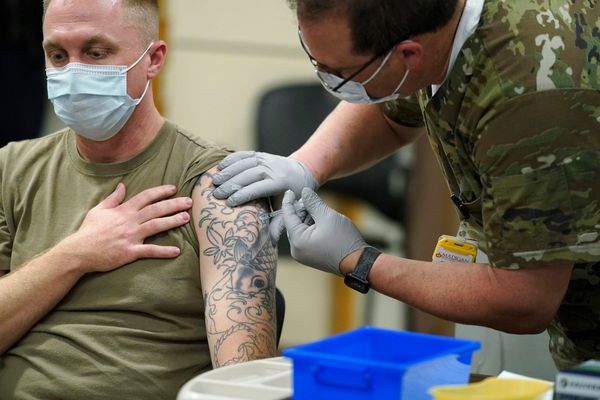When T.Y. Chang, the head of Taiwan footwear major Hong Fu, was in Chennai last week, a meeting with Chief Minister M.K. Stalin was not on the cards. However, after the State government realised, following an initial discussion, that the company was interested in doing business, officials wasted no time and an MoU was signed within hours in the presence of Mr. Stalin that evening.
The subtle message from this quick action is that Tamil Nadu is serious in wooing investment, more so to realise the Chief Minister’s ambitious target of making the State a $1-trillion economy by 2030. In two months, a consultant will be in place to draw a road map for attaining the target.
Finance Minister Palanivel Thiaga Rajan points out it requires 13%-13.5% of nominal growth to achieve this goal. “In the first year we have got 14.5%. We have had a good start. For the second and third year, we have projected 14%. What matters a lot is what happens in the first few years,” he says.
At present, the size of the State’s economy is roughly $290 billion, given the value of the Gross State Domestic Product (GSDP) for 2021-22, as stated in the 2022-23 budget document, is ₹21,79,655 crore.
“If one is to consider a nominal rate of growth of 12% [accounting for inflation] for the coming years, the State’s economy will touch $700 billion-$750 billion easily. The State has to scale up its policies and measures. So, the target is doable,” says N.R. Bhanumurthy, Vice-Chancellor, Dr. B.R. Ambedkar School of Economics University, Bengaluru, and a long-time observer of Tamil Nadu’s economy.
His optimism is shared by the industry. “Our past growth rates should give us the necessary confidence,” says Ar Rm Arun, president, Southern India Chamber of Commerce and Industry. Pointing out that the State’s growth story is a mix of highs and lows, he says, “If we can ensure stability on all fronts, there is no reason not to sustain higher growth rates year on year.” Calling for greater importance to issues concerning micro, small and medium enterprises, the mainstay of any economy, he suggests that the Tamil Nadu Industrial Investment Corporation be made into an institution dealing with development financing.
Dwelling upon the government’s priorities, a key official in the administration says they include electronics manufacturing, e-vehicles, renewables, labour-intensive non-leather footwear, fintech, technical textiles and defence manufacturing. Plans are to make a textile hub, such as Tiruppur, go for high-value products too, apart from taking IT and IT-related services to a greater number of tier 2 and 3 cities. Food processing is another area where the government is planning a big push.
Ramkumar Ramamoorthy, former CMD, Cognizant India, and partner, Catalincs, is impressed with, what he calls, an uncommon feature in Tamil Nadu. There are individual companies scaling to over 15,000 employees in tier-2 locations. “This opportunity to scale in the hinterland and embrace newer innovative business models through the start-up ecosystem should be marketed well to attract technology companies of all hues.”
Hari Thiagarajan, executive director of the Madurai-based Thiagarajar Mills, bats for a project in the southern district under the Mega Investment Textiles Parks, a programme announced in the previous year’s Union Budget. On the potential of job creation, he says an integrated textile park can generate at least one lakh jobs, from spinning to end products.
A policy-maker at Fort St George, the seat of power, explains that the administration closely follows trends in the textile sector. This was reflected in the Chief Minister’s recent visit to the UAE where one of the MoUs signed pertained to the establishment of a garmenting unit in the northern Tamil Nadu. Another says the government is also conscious of the need for promoting labour-intensive units.
Representatives of the leather sector, including Israr Ahmed, director of Farida Group, say the sector needs to be nourished further, as the State’s share at the national level is poised to touch the 50%-mark soon from the present 40% to 45%.
Nonetheless, the State will face several challenges while trying to realise the target, according to one section of observers. “We can become a $1-trillion economy. We will become so. May not be within 10 years but in 13 years or so,” says K.R. Shanmugam, Director, Madras School of Economics. In view of the limited contribution of the primary sector to the State’s economy, it is for industry and services to pitch in. Other southern States are also aggressively wooing investment. “I would suggest that the government give a greater push to the services sector, too.”
Emphasising that skill gap has to be filled, V. Aravind, a corporate consultant associated with government panels dealing with Industrial Training Institutes, says a prerequisite to attract investment is to have adequate technically skilled manpower, the need for which is still there despite automation in a big way. A comprehensive scheme of strengthening ITIs is required and it will also take care of issues concerning the faculty.
As a senior executive of a Mumbai-based housing finance firm puts it, Tamil Nadu may not market its strengths the way other States are doing but its style of doing business in a low-key and “less obtrusive” manner does attract people. The only expectation is the State has to focus its attention on economic development. The government is also conscious of this aspect, according to officials, even as it seeks to achieve development without losing sight of the importance of equity.







